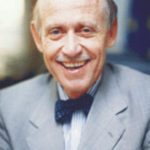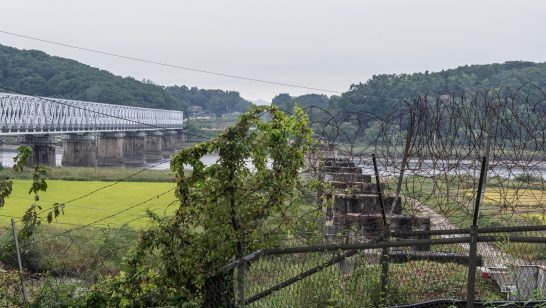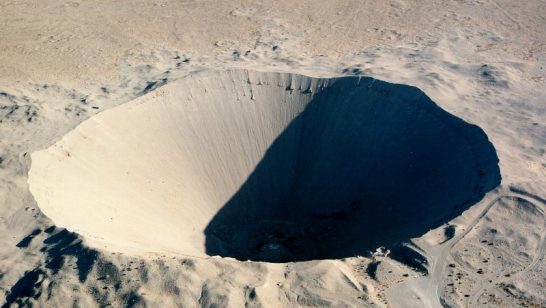
The successful achievement of the implementation day of the Joint Comprehensive Plan of Action on Iran (JCPOA) on January 16 gives us an opportunity to clarify the complex and confusing issue of the acronyms used not only in these nuclear negotiations but also in the UN and in the Nuclear Non-Proliferation Treaty (NPT) context.
The text of the JCPOA identifies the counterparts of Iran in this negotiation as “E3/EU+3”, an acronym which also appears in UN Security Council Resolution 2231, a document conferring UN legitimacy to the JCPOA. The justification for an acronym that looks more like a mathematical equation goes back to 2003 when the E3, an informal troika of European countries (France, Germany and the United Kingdom) initiated negotiations with Iran over its nuclear programme. They were later joined by the High Representative of the EU for Foreign Affairs and Security Policy (the “/EU” in the equation) and finally by China, Russia and the United States (+3).
In the press and in national statements the seven partners which form the E3/EU+3 group are often referred to as “P5+1″to indicate the permanent members of the UN Security Council (China, France, the Russian Federation, the United Kingdom and the United States) plus Germany. Under this label the E3/EU, namely the three original European negotiators, and the High Representative (today Ms Federica Mogherini) who acted as the principal counterpart of Iran, disappear from the picture.
Based on these distinctions, and because the core negotiations on the Iranian nuclear deal took place outside the UN framework, the term E3/EU+3 is more appropriate than P5+1. The fact that both the texts of the Plan of Action and of UN Security Council resolution 2231 adopt this acronym confirms this to be the correct term when referring to the partners of Iran in the JCPOA framework.
Why does this apparent technicality matter? The heart of the problem is the role of the five permanent members of the Security Council and the link between possession of nuclear weapons and management of the international system more generally, and non-proliferation crises particularly. As the victors of the Second World War, the P5 have played a leading role in governing all United Nations matters and, in particular, nuclear matters. They sit permanently in the Security Council, they have a veto right on resolutions and candidacies to the main positions in the UN. Their influence includes a permanent presence in subsidiary bodies dealing with nuclear matters such as the sanction committees on DPRK, Iran, Iraq, and even in the Advisory Board of the UN Secretary General on Disarmament Matters. Their power was further strengthened in 2004 by the entry into force of Resolution 1540 in which the P5 play a dominant role. This text legalizes the principle that the proliferation of weapons of mass destruction is a threat to international peace and security and is now a key instrument in the struggle against the dissemination of weapons of mass destruction.
The institutional pre-eminence of the P5 on nuclear issues had been further enhanced by the entry into force, in 1970, of the NPT. This treaty makes a fundamental distinction between the five Nuclear Weapon States (NWS) and the remaining Non-Nuclear Weapon States (NNWS). The first have the obligation not to transfer to NNWS nuclear weapons which only NWS are entitled to possess; the latter have the obligation not to receive such weapons. Article 9 of the NPT provides that a nuclear-weapon State “is one which has manufactured and exploded a nuclear weapon or other nuclear explosive device prior to 1 January 1967”. Under this definition, all the five UNSC permanent members also fall into the category of NWS under the NPT.
Yet, we need to make a distinction between these two separate “hats”: the acronym “P5” should be used when referring to the permanent members of the Security Council whereas “N5” should be employed when indicating the five NPT nuclear weapons states. It is in their “N5” capacity that they act when dealing with nuclear issues in the Treaty context. In particular, in 2010, these five countries were, for example, called upon by the NPT Review Conference to report on disarmament measures undertaken to implement Article 6 of the NPT. In that same capacity they presented such a report in 2014 and also made a common statement at the 2015 Review Conference. On the other hand their nuclear activities within the UN Security Council framework (such as Resolution 1540 and other sanctions resolutions) would clearly fall under their P5 “hat”. The fact that the P5 and the N5 are the same countries must be considered coincidental.
Based on a proposal made in 2008 by then UK Secretary of State for Defense Des Browne during an unprecedented visit of a Defense Minister to the Conference on Disarmament in Geneva, the Foreign Ministers of China, France, Russia, United Kingdom and United States have been meeting regularly to coordinate their positions on nuclear issues in a format that is referred to as the “P5 process”. Considering that these countries participate in these meetings as “Non-Proliferation Treaty Nuclear Weapons States” and not as permanent members of the UN Security Council, it would probably be preferable to call this process the “N5 process”.
The main rationale for not automatically identifying the UN P5 with the five NPT nuclear weapon states is to preclude two possible precedents: firstly that permanent membership in the UNSC gives the right to possess nuclear weapons and secondly that the possession of such weapons is a prerequisite to permanently join the UNSC (should an enlargement of the Security Council ever occur). Also, as the Iran negotiations showed, supranational and international organizations, as well as states other than the P5/N5 group can play an important role in solving international nuclear non-proliferation crises.
The opinions articulated above represent the views of the author(s), and do not necessarily reflect the position of the European Leadership Network or any of its members. The ELN’s aim is to encourage debates that will help develop Europe’s capacity to address the pressing foreign, defence, and security policy challenges of our time.



